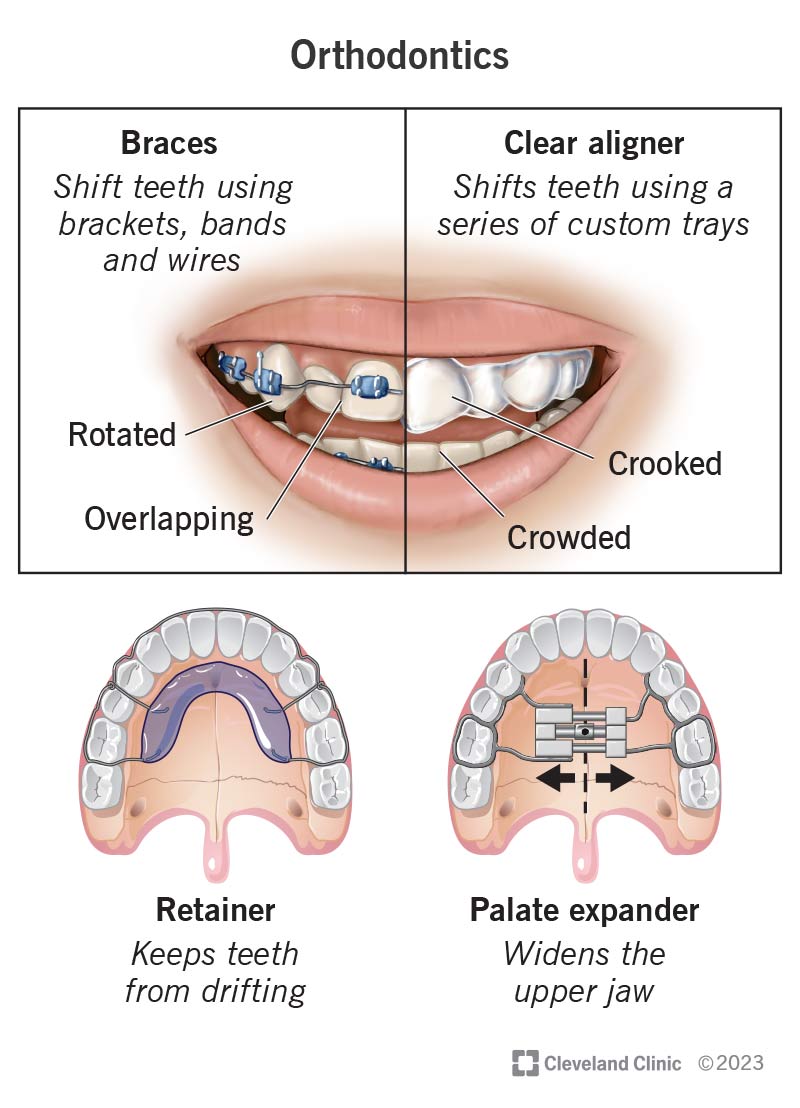The Greatest Guide To Causey Orthodontics
Wiki Article
The 20-Second Trick For Causey Orthodontics
Table of ContentsLittle Known Questions About Causey Orthodontics.10 Simple Techniques For Causey OrthodonticsSome Ideas on Causey Orthodontics You Should KnowHow Causey Orthodontics can Save You Time, Stress, and Money.How Causey Orthodontics can Save You Time, Stress, and Money.
Ignoring occlusal partnerships, it was normal to remove teeth for a selection of dental concerns, such as malalignment or overcrowding. The idea of an undamaged dentition was not widely valued in those days, making bite correlations appear pointless. In the late 1800s, the concept of occlusion was crucial for creating reliable prosthetic substitute teeth.As these concepts of prosthetic occlusion advanced, it became a very useful device for dentistry. It remained in 1890 that the job and influence of Dr. Edwards H. Angle started to be really felt, with his payment to modern-day orthodontics particularly notable. Concentrated on prosthodontics, he educated in Pennsylvania and Minnesota before guiding his interest in the direction of dental occlusion and the therapies needed to keep it as a normal condition, hence coming to be recognized as the "father of contemporary orthodontics".

The principle of optimal occlusion, as postulated by Angle and incorporated into a category system, made it possible for a shift towards treating malocclusion, which is any kind of inconsistency from typical occlusion. Having a full set of teeth on both arcs was extremely searched for in orthodontic therapy as a result of the need for precise relationships in between them.
The Basic Principles Of Causey Orthodontics
As occlusion became the vital priority, facial proportions and aesthetic appeals were disregarded - orthodontist expert. To achieve excellent occlusals without using external forces, Angle proposed that having ideal occlusion was the ideal method to gain optimum face aesthetics. With the death of time, it came to be quite obvious that also a phenomenal occlusion was not suitable when thought about from a visual perspectiveIt came to be noticeable that orthodontic treatment might change mandibular advancement, causing the formation of functional jaw orthopedics in Europe and extraoral pressure steps in the United States. Nowadays, both practical home appliances and extraoral devices are applied around the world with the purpose of amending development patterns and types. As a result, pursuing real, or at the very least improved, jaw connections had become the major goal of treatment by the mid-20th century.
Causey Orthodontics Things To Know Before You Buy
 The American Journal of Orthodontics was produced for this objective in 1915; before it, there were no scientific purposes to comply with, neither any kind of exact category system and braces that did not have functions. Till the mid-1970s, braces were made by wrapping metal around each tooth. With developments in adhesives, it ended up being feasible to rather bond metal brackets to the teeth.
The American Journal of Orthodontics was produced for this objective in 1915; before it, there were no scientific purposes to comply with, neither any kind of exact category system and braces that did not have functions. Till the mid-1970s, braces were made by wrapping metal around each tooth. With developments in adhesives, it ended up being feasible to rather bond metal brackets to the teeth.Andrews gave an insightful definition of the ideal occlusion in permanent teeth. This has had significant impacts on orthodontic treatments that are administered consistently, and these are: 1. Right interarchal connections 2. Proper crown angulation (tip) 3. Correct crown inclination (torque) 4. No turnings 5. Tight get in touch with points 6. Flat Curve of Spee (0.02.5 mm), and based on these principles, he uncovered a treatment system called the straight-wire appliance system, or the pre-adjusted edgewise system.
The advantage of the design lies in its brace and archwire mix, which needs only very little wire bending from the orthodontist or medical professional (emergency orthodontist near me). It's aptly named after this attribute: the angle of the port and thickness of the bracket base inevitably establish where each tooth is located with little need for extra adjustment
The 5-Minute Rule for Causey Orthodontics
Both of these systems used similar braces for every tooth and necessitated the flexing of an archwire in 3 airplanes for situating teeth in their wanted positions, with these bends determining supreme positionings. When it comes to orthodontic devices, they are divided into 2 types: removable and repaired. Detachable home appliances can be taken on and off by the person as required.
Thus, practically all modern set home appliances can be considered variations on this edgewise appliance system. Early 20th-century orthodontist Edward Angle made a significant contribution to the globe of dentistry. He created 4 distinct device systems that have actually been utilized as the basis for many orthodontic therapies today, barring a couple of exceptions.
About Causey Orthodontics

The wire finished in a thread, and to move it forward, an adjustable nut was utilized, which enabled an increase in area. By ligation, each private tooth was affixed to this large archwire (orthodontist expert). As a result of its restricted range of activity, Angle was not able to achieve exact tooth positioning with an E-arch
These tubes held a firm pin, which could be rearranged at each consultation in order to move them in area. Called the "bone-growing device", this device was supposed to motivate healthier bone development due to its capacity for transferring pressure straight to the roots. Nonetheless, executing it proved troublesome in truth.
Report this wiki page